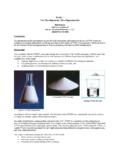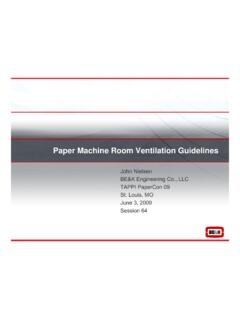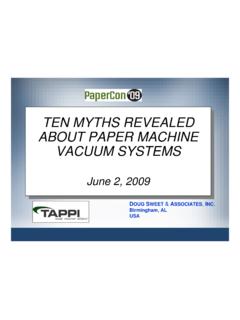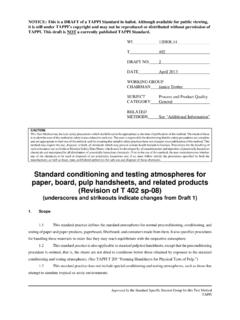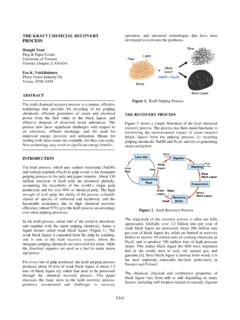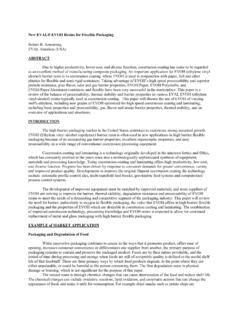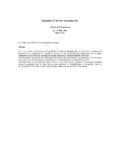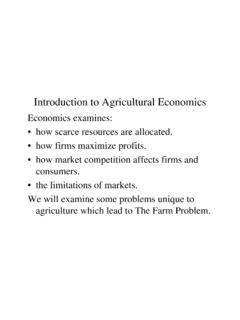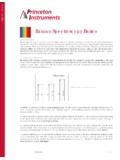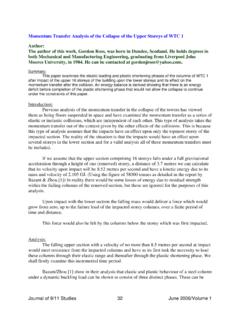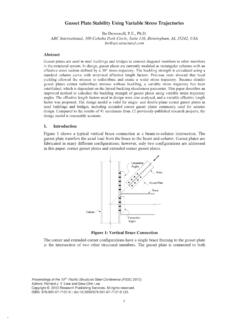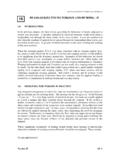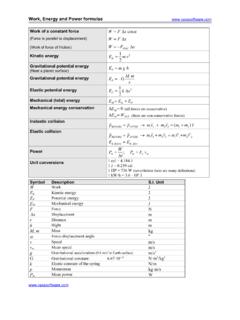Transcription of Challenges in Winding Flexible Packaging Film
1 Challenges in Winding Flexible Packaging Film By R. Duane Smith Product Manager- Specialty Winding Black Clawson Converting Machinery Davis Standard LLC. Fulton, New York, USA. Abstract Every Flexible Film Producer is faced with the challenge of producing quality rolls of film products. This paper will assist in overcoming the Challenges in Winding Flexible Packaging films. It addresses the definition of a quality roll of film and the importance of in-wound tension in consistently producing good quality rolls. It then discusses the Winding principles used on all winders to control in-wound tension or roll hardness. It explains how to determine the proper amount of web tension for various types of films and the principles of nip and gap Winding . Then the basic types of center, surface and combination center/surface winders will be compared with the advantages and disadvantages of each.
2 After the discussion of how roll hardness is achieved, methods of measuring roll hardness are presented. Finally, other roll defects to avoid in producing quality rolls of film will be listed and the book "Roll and Web Terminology" will be brought to the audience's attention for them to learn more about the causes and cures of common roll and web defects. Introduction If all film webs were perfect, then the ability to produce perfect rolls of film products wouldn't be much of a challenge. Unfortunately due to the natural variation in resins and additives and non-uniformities of the film formation processes, there is no such animal as a perfect film. The Winding operation's challenge is to wind film webs with slight imperfections being sure that these slight imperfections do not stand out in appearance and are not amplified during the Winding process.
3 Then it is the responsibility of the winder operator to make sure that the Winding process does not produce additional variations in the product quality. The ultimate challenge is to wind Flexible Packaging Film Webs with slight imperfections and produce quality rolls that will run on your customer's process without problems and produce high quality products for their customers. 1. Definition of a Quality Roll If the challenge is to wind quality rolls of Flexible Packaging film webs, then the first task is to define our customers' definitions of good quality. A baker will tell you that in order to please their customers, they must produce rolls that are of the right shape, the right size, the right consistency not too hard and not too soft, they must look good no blemishes or visual defects, and they must have a good aroma.
4 A film product customer wants rolls of film that are: The right shape -Round and proper width The right size -Right diameter or length The right consistency -Proper roll density - not too hard or soft Must look good -No blemished or visual defects Aroma? -Well, start shipping your customers bad rolls of film and they are going to raise a stink !!! Roll density or in-wound tension, is the most important factor in determining the difference between good quality and poor quality rolls of film products. Rolls that are wound too soft will go out of round while Winding or will go out of round while being handled or stored. The roundness of rolls is very important in your customer's operation. When unwinding out of round rolls, each revolution will produce a tight and slack tension wave.
5 These tension variations can distort the web and cause register variations in the printing process. The only way to minimize the effect of these tension variations is to run the operation at a much lower speed, which greatly affects the production process. Rolls that are wound too tight will also cause problems. Rolls of some films, when wound too tightly will block . Roll blocking is a defect where the sheet layers fuse or adhere together. When Winding extensible film on thin wall cores, Winding hard rolls can cause the cores to collapse. This can cause problems in removing the shaft, or with inserting the shaft or chucks on the subsequent unwinding operation. Tightly wound rolls contain high residual stresses or high in-wound tension. The film will stretch & deform as these stresses are relieved as the rolls cure during storage.
6 Rolls that are wound too tightly will exaggerate web defects. No web is perfectly flat or the same thickness from one side to the other. Typically, webs will have slight high and low areas in the cross machine profile where the web is thicker or thinner. When Winding hard rolls of film, the high caliper areas build on each other. As hundreds, even thousands of layers are wrapped creating a roll, the high areas form ridges or high spots in the roll. As the film is stretched over these ridges, it is deformed. Then when the roll is unwound, these areas produce a defect known as bagginess in the film. Hard rolls that have high gauge bands next to low gauge bands will produce a roll defect known as corrugations or rope marks in the rolls. Slight defects of these types will not be noticeable in a wound roll if sufficient air is wound into the roll in the low areas and the web is not stretched over the high areas.
7 Still the rolls must be wound hard enough that so they will be round and will stay that way during handling and storage. 2. Some Flexible Packaging films, either by their extrusion formation process or by their coating and laminating process, have cross machine variations of thickness too severe to be wound without exaggerating these defects. To overcome this, these webs are moved back and forth as they are being slit and wound, or the slitters and winder can be moved back and forth relative to the web. This is called oscillation, which randomizes these localized defects across the wound rolls. Oscillation may be either a constant speed / stop / constant speed back', or a sine type wave of speed curve'. What is important is that the oscillation speed is fast enough to randomize defects and slow enough that it does not strain or wrinkle the film.
8 Additionally the rolls, after they have been slit, are wound with straight edges. The rule of thumb for the maximum oscillation speed is 25mm (~1 ) per minute per 150 mpm (500 fpm) Winding speed. For best results, the oscillation speed should vary proportional to the Winding speed. How to Achieve and Measure Roll Hardness Now we know why roll hardness is important. Next let's discuss how to achieve and measure roll hardness. As a roll of Flexible Packaging film material winds, tension builds inside the roll, which is known as in-wound tension or residual stress. If this stress becomes greater as the roll is wound, then the inner wraps towards the core will be put under high compressive loads. This is what causes a defect known as buckling of the webs in localized areas in the roll.
9 When Winding non-elastic and high slip films, the inner layers will loosen, which can cause the roll to dish while Winding or telescope when unwinding. To prevent this, the rolls want to be wound tight at the core and then wound with less tightness as the roll builds in diameter as shown below. The larger the finished rewind diameters, the more critical the roll hardness profile is. See Figure #1. Figure #1. Roll Hardness vs. Diameter 120. 100. Hardness Taper 80. Ideal Hardness Taper 60 Maximum Hardness Taper 40 Minimum Hardness Taper 20. 0. Core Full Roll Diameter 3. Film Winding Principles Roll hardness is developed in different ways on different types of winders but the basic principles of how to build roll hardness are always the same. To remember these principles, just remember that to consistently wind Dynamite Rolls'.
10 You need TNT: T ension - The Winding Web Tension N ip - The Nip of the Pressure Roll or Drum T orque - From the Center Drive or Torque Drum Web Tension Principle of Winding - When Winding elastic films, web tension is the dominant principle of Winding to control roll hardness. The more tension pulled, the more stretch put on the web before Winding , the harder the wound rolls will be. The Winding web tension is often determined empirically; however, the maximum amount of web tension can also be determined using the modulus of elasticity of the film material. The modulus is the ratio of the stress and strain of the web. Figure #2 shows the stress/strain curves for different types of film. Films, unlike metals, have moduli that are far from linear. By measuring the secant modulus for either 1% or 2% of the strain curve, and then extrapolating it linearly to 100% elongation, we can determine the modulus of elasticity.
